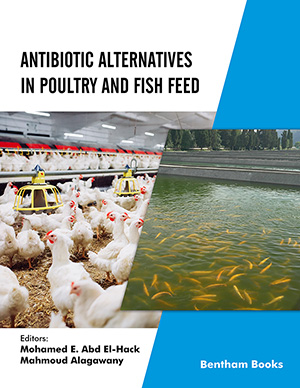[1]
Koçkar MC, Nazıroğlu M, Celik O, Tola HT, Bayram D, Koyu A. N-acetylcysteine modulates doxorubicin-induced oxidative stress and antioxidant vitamin concentrations in liver of rats. Cell Biochem Funct 2010; 28(8): 673-7.
[2]
Pieniążek A, Czepas J, Piasecka-Zelga J, Gwoździński K, Koceva-Chyła A. Oxidative stress induced in rat liver by anticancer drugs doxorubicin, paclitaxel and docetaxel. Adv Med Sci 2013; 58(1): 104-11.
[3]
Boutabet K, Kebsa W, Alyane M, Lahouel M. Polyphenolic fraction of Algerian propolis protects rat kidney against acute oxidative stress induced by doxorubicin. Indian J Nephrol 2011; 21(2): 101-6.
[4]
Rashid S, Ali N, Nafees S, Ahmad ST, Arjumand W, Hasan SK, et al. Alleviation of doxorubicin-induced nephrotoxicity and hepatotoxicity by chrysin in Wistar rats. Toxicol Mech Methods 2013; 23(5): 337-45.
[5]
Giampieri F, Alvarez-Suarez JM, Gasparrini M, Forbes-Hernandez TY, Afrin S, Bompadre S, et al. Strawberry consumption alleviates doxorubicin-induced toxicity by suppressing oxidative stress. Food Chem Toxicol 2016; 94: 128-37.
[6]
Quiles JL, Huertas JR, Battino M, Mataix J, Ramírez-Tortosa MC. Antioxidant nutrients and adriamycin toxicity. Toxicology 2002; 180(1): 79-95.
[7]
Liu K, Azamimi Abdullah A, Huang M, Nishioka T. Altaf-Ul-Amin Md, et alNovel approach to classify plants based on metabolite-content similarity. BioMed Res Int 2017; 2017: 5296729.
[8]
Ruiz-Rodríguez BM, de Ancos B, Sánchez-Moreno C, Fernández-Ruiz V, de Cortes Sánchez-Mata M, Cámara M, et al. Wild blackthorn (Prunus spinosa L.) and hawthorn (Crataegus monogyna Jacq.) fruits as valuable sources of antioxidants. Fruits 2014; 69(1): 61-73.
[9]
Nabavi SF, Habtemariam S, Ahmed T, Sureda A, Daglia M, Sobarzo-Sánchez E, et al. Polyphenolic composition of Crataegus monogyna Jacq.: From chemistry to medical applications. Nutrients 2015; 7(9): 7708-28.
[10]
Kumar D, Arya V, Bhat Z, Khan NA, Prasad DN. The genus Crataegus: Chemical and pharmacological perspectives. Rev Bras Farmacogn 2012; 22(5): 1187-200.
[11]
Wang J, Xiong X, Feng B. Effect of Crataegus usage in cardiovascular disease prevention: An evidence-based approach. Evid Based Complement Alternat Med 2013; 2013: 149363.
[12]
Verma SK, Jain V, Verma D, Khamesra R. Crataegus oxyacantha- A Cardioprotective Herb. J Herbal Med Toxicol 2007; 1(1): 65-71.
[13]
Liao BS, Liao JF, Alex L, et al. Lipid
metabolism and Fructus crataegus. US20040132816 2004.
[14]
Liao BS, Liao JF, Alex L, et al. Method
for preventing and/or treating the cardiovascular and hepatic
diseases induced by hyperlipidemia which comprises administered
an effective amount of bioflavonoids extract derived from fructus
crataegus (lipid metabolism and Fructus crataegus). US11226862 2005.
[15]
Uchiyama M, Mihara M. Determination of malonaldehyde precursor in tissues by thribarbituric acid test. Anal Biochem 1978; 86: 271-8.
[16]
Flohe L, Gunzler WA. Analysis of glutathione peroxidase. Methods Enzymol 1984; 105: 114-21.
[17]
Lowry OH, Rosegrough NJ, Farr AL, Randall RJ. Protein measurement with the folin phenol reagent. J Biol Chem 1951; 193: 265-75.
[18]
Ellman GL. Plasma Antioxidants. Arch Biochem Biophys 1959; 82: 70-7.
[19]
Mohajeri M, Sahebkar A. Protective effects of curcumin against doxorubicin-induced toxicity and resistance: A review. Crit Rev Oncol Hematol 2018; 122: 30-51.
[20]
Lee IC, Kim SH, Baek HS, Moon C, Bae CS, Kim SH, et al. Melatonin improves adriamycin-induced hepatic oxidative damage in rats. Mol Cell Toxicol 2013; 9: 257-65.
[21]
Karakilcik AZ, Bitiren M, Zerin M, Celik H, Aksoy N. Melatonin increased vitamin C and antioxidant enzyme values in the plasma, heart, liver, and kidney of adriamycin-treated rats. Turk J Biol 2015; 39: 925-31.
[22]
Mustafa HN, El-Awdan SA, Hegazy GA, Abdel JGA. Prophylactic role of coenzyme Q10 and Cynara scolymus L. on doxorubicin-induced toxicity in rats: Biochemical and immunohistochemical study. Indian J Pharmacol 2015; 47(6): 649-56.
[23]
Djebbari R, Chemam Y, Boubekri N, Lakroun Z, Kebieche M, Amrani A, et al. Chemoprotective potential of Helianthemum confertum against the loss of molecular and functional integrity of the liver cell in doxorubicin-treated rats. IJPPR 2017; 9(7): 903-10.
[24]
Giampieri F, Alvarez-Suarez JM, Gasparrini M, Forbes-Hernandez TY, Afrin SBS, et al. Strawberry consumption alleviates doxorubicin-induced toxicity by suppressing oxidative stress. Food Chem Toxicol 2016; 94: 128-37.
[25]
Indu R, Azhar TS, Nair A, Nair CK. Amelioration of doxorubicin induced cardio-and hepato-toxicity by carotenoids. J Cancer Res Ther 2014; 10(1): 62-7.
[26]
Jambhulkar S, Deshireddy S, Jestadi DB, Periyasamy L. Quercetin attenuating doxorubicin induced hepatic, cardiac and renal toxicity in male albino wistar rats. JPCT 2014; 8(2): 985-1004.
[27]
Ayaz SA, Bhandari U, Pillai KK. Influence of DL α-lipoic acid and vitamin-E against doxorubicin-induced biochemical and histological changes in the cardiac tissue of rats. Indian J Pharmacol 2005; 37(5): 294-9.
[28]
Krajka-Kuźniak V, Paluszczak J, Oszmiański J, Baer-Dubowska W. Hawthorn (Crataegus oxyacantha L.) bark extract regulates antioxidant response element (ARE)-mediated enzyme expression via Nrf2 pathway activation in normal hepatocyte cell line. Phytother Res 2014; (4): 593-602.
[29]
Martínez-Rodríguez JL, Reyes-Estrada CA, Gutiérrez-Hernández R, López JA. Antioxidant, hypolipidemic and preventive effect of hawthorn (Crataegus oxyacantha) on alcoholic liver damage in rats. J Pharmacognosy Phytother 2016; 8(11): 193-202.
[30]
Rezaei-Golmisheh A, Malekinejad H, Asri-Rezaei S, Farshid AA, Akbari P. Hawthorn ethanolic extracts with triterpenoids and flavonoids exert hepatoprotective effects and suppress the hypercholesterolemia-induced oxidative stress in rats. Iran J Basic Med Sci 2015; 18(7): 691-9.
[31]
Kalender Y, Yel M, Kalender S. Toxicology. Doxorubicin hepatotoxicity and hepatic free radical metabolism in rats : The effects of vitamin E and catechin. Toxicology 2005; 209(1): 39-45.
[32]
Gokcimen A, Cim A, Tola HT, Bayram D, Kocak A, Ozguner F, et al. Protective effect of N-acetylcysteine, caffeic acid and vitamin E on doxorubicin hepatotoxicity. Hum Exp Toxicol 2007; 26: 519-25.
[33]
Benabderrahmane W, Lores M, Lamas JP, Benayache S. Matrix solid-phase dispersion as a tool for phytochemical and bioactivities characterization: Crataegus oxyacantha L. A Case Study. Nat Prod Res 2017; 32(10): 1220-3.
[34]
Llesuy SF, Arnaiz SL. Hepatotoxicity of mitoxantrone and doxorubicin. Toxicology 1990; 63(2): 187-98.
[35]
Al-Syaad K, Ibrahim EH. The protective effects of the aqueous extract of Saliva against biochemical and histopathological changes in kidney and liver of male rats treated with the anticancer drug doxorubicin. RJPBCS 2014; 5(6): 237-45.
 75
75 2
2



















